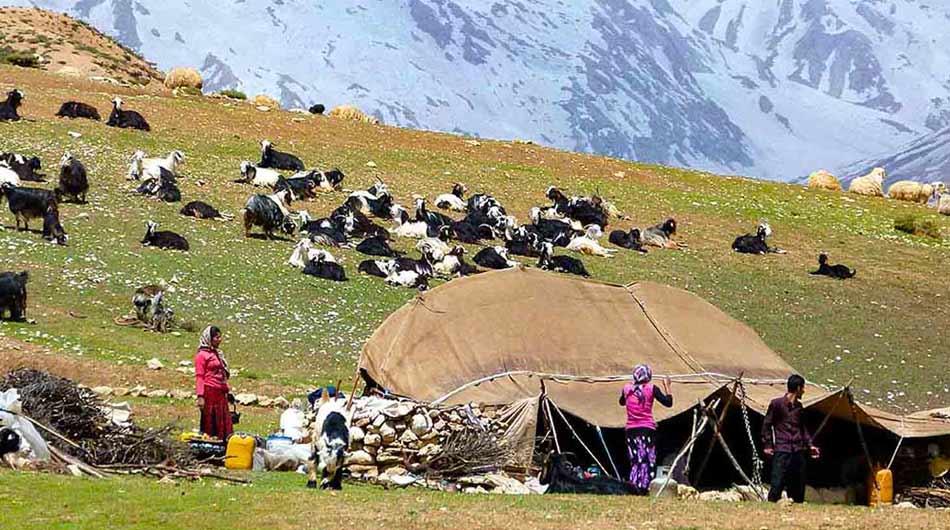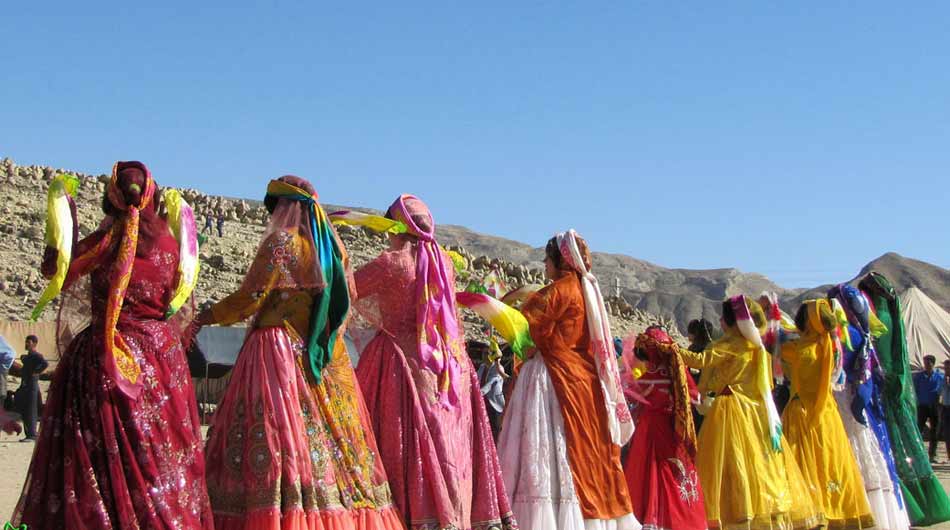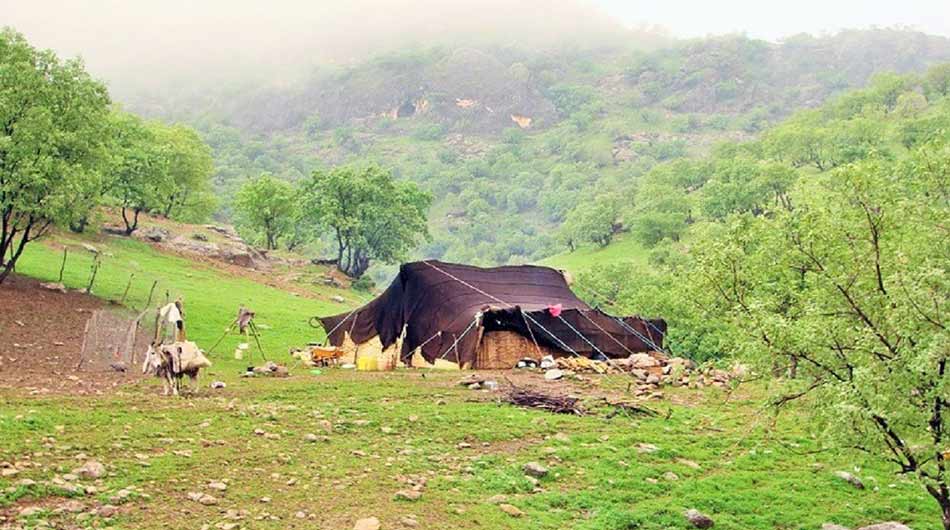Traditions and Lifestyles of Iran’s Nomads

The Main Nomadic Tribes in Iran
Iran’s nomadic population is composed of several ethnic groups, each with its distinct customs and traditions. The three most prominent tribes are the Bakhtiari, Qashqai, and Shahsavan. Each tribe is distinguished by its language, attire, customs, and lifestyle, yet they all share a common reliance on herding and a nomadic way of life.
- The Bakhtiari: Primarily residing in the Zagros Mountains, the Bakhtiari people are one of Iran’s largest and most recognized nomadic groups. They migrate twice a year, moving between the lowlands and highlands in search of better grazing land for their livestock.
- The Qashqai: Living primarily in the Fars province, the Qashqai people are renowned for their vibrant carpets and textiles. They speak a Turkic language and, like the Bakhtiari, migrate seasonally with their herds of sheep and goats.
- The Shahsavan: This tribe resides in the northwestern regions of Iran, particularly in the Ardabil province. Known for their traditional tents called “alachs,” they are skilled in making beautiful, geometric-patterned carpets and rugs.
These tribes, along with several others, contribute to the cultural mosaic of Iran, each maintaining its identity through specific rituals, attire, and social structures.
Seasonal Migrations
Migration, or “Kooch” as it is known in Persian, is at the heart of nomadic life in Iran. The rhythm of their lives is dictated by the seasons. During the spring and summer months, the nomads move to the highland pastures, known as “Yaylak,” where the weather is cooler and more suitable for their herds. In autumn, they descend to the lowlands, or “Qishlaq,” to escape the harsh winter conditions.
These migrations are not just practical but are also culturally significant. The journey itself is a communal event where families move together, accompanied by their animals, and often sing traditional songs along the way. The paths they follow are steeped in history, as many of these routes have been passed down through generations.
Social Structure and Family Life
The social organization of Iranian nomads is typically tribal and patriarchal, with strong family bonds. The tribe is the central unit, and within it, extended families live together, often in large black tents made from goat hair. The head of the family, usually the eldest male, plays a pivotal role in decision-making. However, women also hold significant responsibilities in daily life, particularly in domestic affairs and handicrafts.
Women are skilled in weaving carpets, kilims, and other textiles, which are not just utilitarian but also serve as a source of income. The patterns and designs they use are often passed down through generations, each motif carrying symbolic meaning and reflecting their close connection to nature. The vivid colors and intricate designs of these textiles are recognized worldwide for their beauty and craftsmanship.
Marriage within the tribes is an important event, often arranged by families. The ceremonies are vibrant affairs, filled with music, dance, and traditional customs that reinforce the tribe’s sense of community and continuity. Hospitality is a core value among the nomads, and guests are often treated with great respect and generosity, despite the simplicity of their lives.
 Traditions and Cultural Practices
Traditions and Cultural Practices
Despite the challenges of modernization, the nomads of Iran have preserved their cultural identity through various rituals, festivals, and oral traditions. Storytelling, poetry, and music play a significant role in their cultural expression. Instruments like the “sorna” (a type of woodwind) and “dohol” (a large drum) are commonly used in tribal music, which accompanies celebrations, festivals, and religious ceremonies.
The clothing worn by these nomads is another reflection of their cultural heritage. Traditional attire is not only practical, suited to the harsh conditions of their environment, but also symbolic. The Bakhtiari, for example, are known for their distinctive felt hats, while the Qashqai women often wear brightly colored dresses adorned with intricate embroidery.
Challenges and the Future of Nomadic Life in Iran
While the traditions of Iran’s nomads are rich and vibrant, their way of life is under threat. Economic pressures, changing climate conditions, and governmental policies encouraging settlement have led many nomads to abandon their traditional lifestyles. Younger generations are increasingly moving to cities in search of better educational and economic opportunities, leading to a gradual erosion of this ancient way of life.
Efforts are being made by cultural preservationists and some government initiatives to sustain nomadic traditions, but the future remains uncertain. However, the resilience and adaptability of these tribes suggest that, while their way of life may evolve, the essence of their culture will continue to be a vital part of Iran’s cultural landscape.
The traditions and lifestyles of Iran’s nomads are a testament to the enduring human spirit and the ability to live harmoniously with nature. Their seasonal migrations, intricate social structures, and rich cultural practices offer valuable insights into a way of life that has remained largely unchanged for centuries. As Iran modernizes, it is crucial to recognize and preserve the unique heritage of these nomadic communities, ensuring that their culture remains a living tradition rather than a memory of the past.
Tags:Adventure holidays, Bakhtiari people, Best time to travel to iran, best tour operator iran, Cultural sites of Iran, Culture of Iranian People, Economy of Travel, Holiday in Iran, Iran Architectural, iran attractions, Iran country, Iran cultural, iran destinations, Iran enriching experience, Iran sightseeing tours, iran Solo trip, iran tour, Iran tour packages, iran tourist attractions, Iran travel agency, iran travel expenses, Iran Travel Guide, Iran Travel Tips, Iran's Nomads, Iranian culture, Iranian Hospitality, lifestyles of Iran's nomads, must-visit Iran, persia tour, Surfing In Iran, top tourist destinations, travel to iran, Traveling to Iran, travelling to iran, trip to iran, vacation packages, visit iran, Zagros Mountains, درناگشت


 Traditions and Cultural Practices
Traditions and Cultural Practices